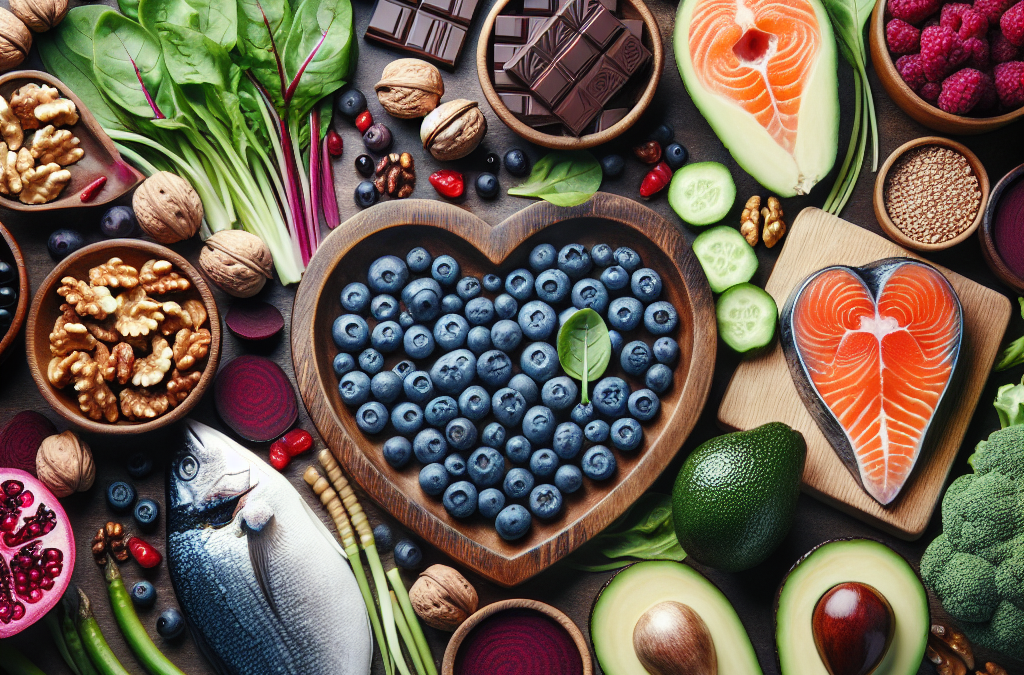Choosing Whole Grains for Heart Health
Understanding the Benefits
As someone who has navigated through various diet trends, I cannot stress enough how
switching to whole grains has made a huge difference in my heart health. Whole grains like
brown rice, quinoa, and barley are packed with fiber, which helps reduce cholesterol levels
and maintain steady blood sugar. This is crucial for keeping your heart in tip-top shape.
Additionally, whole grains are full of essential nutrients, including B vitamins and
antioxidants. These nutrients are like little superheroes fighting against oxidative stress
in our bodies. Just think of it as stocking up on the good stuff that supports not just your
heart, but your overall well-being.
Seriously, making this change isn’t as hard as it sounds. I remember how hesitant I was at
first, but incorporating more whole grains into my meals has actually been enjoyable! Whether it’s
a hearty oatmeal breakfast or a quinoa salad for lunch, it can be pretty darn delicious!
Fruits and Vegetables: Color Your Plate
Incorporating Variety
Have you ever noticed how vibrant a plate filled with different fruits and veggies can look?
That’s not just for show; those colors indicate a diverse array of nutrients that are incredibly
beneficial for heart health. I’ve found that aiming for a rainbow on my plate not only makes
my meals more visually appealing but enhances the nutritional value too.
Each color typically represents specific vitamins and antioxidants. For example, red bell
peppers are rich in vitamin C, while blueberries are famous for their antioxidant properties.
By including a variety of colors, we’re ensuring we’re getting a comprehensive range of nutrients
that help keep our hearts strong.
Plus, let’s not forget about freshness! I love hitting up my local farmer’s market to find
seasonal fruits and veggies. The taste is unbeatable, and I can feel good about supporting local
farmers. It’s a win-win, honestly.
Healthy Fats: Embracing the Good Stuff
Choosing Wisely
There’s this misconception that all fats are bad, and let me tell you, that couldn’t be further
from the truth! Healthy fats like those found in avocados, nuts, seeds, and olive oil are essential
for a heart-smart diet. I used to shy away from any fats, but once I learned about the benefits
of healthy fats, my perspective shifted.
These fats help lower bad cholesterol levels, improve insulin sensitivity, and even support
brain health. When I started drizzling olive oil on my veggies or snacking on a handful of nuts,
I noticed an improvement in my energy levels and overall mood. It’s amazing how adding the right
kind of fats can really transform your eating experience.
A tip I swear by is to keep those healthy fats at the forefront of your cooking. Toss some
avocados in your salads or use nut butter on your morning toast. Trust me; your taste buds and
heart will thank you for it!
Lean Proteins: Fueling Your Body
Opting for the Right Sources
Over the years, I’ve learned the importance of incorporating lean proteins into my meals.
Lean meats like chicken or turkey, fish, beans, and legumes provide essential amino acids without
adding excessive saturated fats that could harm my heart. Believe me, the benefits are worth it!
Get an Amazing Discount on the Best Certified Organic Whole Food Supplement!
Fish, in particular, has been a standout in my diet. Varieties like salmon and mackerel are
rich in omega-3 fatty acids, known for their heart-protective qualities. I find myself looking
forward to my weekly fish night now—it feels like a treat while still being good for me.
What’s more, plant-based proteins have become a staple in my diet as well. I mix up my meals
with lentils, chickpeas, and quinoa. They are not only filling but also great for my heart health,
as they are low in fat and high in fiber. Honestly, the variety keeps my meals exciting!
Mindful Eating: Savor the Experience
Listening to Your Body
In my journey towards better cardiovascular health, adopting a mindful eating approach has been
a game changer. It’s all about tuning into my body’s hunger signals and appreciating the flavors
of my food. I used to rush meals, but now I really take my time. It’s amazing how much I enjoy
food when I’m fully present.
Mindful eating also helps me avoid overeating, which has a direct impact on heart health. By
really noticing how my body feels and stopping when I’m satisfied, I maintain a healthier weight
and promote better digestion. It doesn’t have to be complicated; just slowing down makes all the
difference.
I like to create a calming atmosphere during meals—sometimes I’ll put on soft music or set the
table nicely. Making meals a more enjoyable experience reinforces the idea that food is not just
fuel, but also pleasure. Plus, it allows me to connect better with those I’m dining with.
FAQ Section
1. Why are whole grains important for heart health?
Whole grains are rich in fiber, antioxidants, and essential nutrients that help lower cholesterol and maintain stable blood sugar levels, all of which benefit heart health.
2. How can I incorporate more fruits and vegetables into my diet?
You can start by adding a side salad to your meals, snacking on fruits instead of processed snacks, or making smoothies that include a variety of fruits and greens.
3. What are some examples of healthy fats?
Healthy fats come from sources like avocados, nuts, seeds, extra virgin olive oil, and fatty fish. Incorporating these regularly can benefit your heart health significantly.
4. Why is lean protein important?
Lean proteins are low in saturated fats and provide essential amino acids that support body functions without increasing heart disease risk, making them excellent for a heart-smart diet.
5. What is mindful eating, and how can it help me?
Mindful eating focuses on being present during meals, listening to your hunger signals, and appreciating your food, which can help prevent overeating and improve overall enjoyment.




